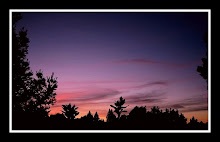The shutter in the camera lens opens to allow sufficient light to produce the image. The shutter functions like a door that closes and opens at different speed depending on the instruction it receives from the photographer of how much light should be allowed into the lens to take a picture. A well-exposed image is developed when the right amount of light enters the lens.
The length of time allowed for light to enter the lens therefore is called shutter speed. Shutter speed measures the speed in which the shutter opens and closes permitting light into the lens. The shutter speed can be opened for 15secs, 10 secs, 5 secs, 1/5 secs, 1/100 secs, 1/2000 secs, etc. In poor lighting conditions you should use a slow shutter speed i.e. the shutter opens for a longer time. On the contrary, when there is too much light you should use a fast shutter speed i.e. the shutter opens for a shorter time.
Why is it important that adequate amount of light enters the lens when taking a picture? This is because too much light entering the lens makes the image over-exposed (too bright and everyone and everything on your photo will look snowy) or under-exposed (too dark that you might not be able to see anything at all). I will elaborate the exposure of light in my next article.
When you have movement of subjects (people, cars, animals, etc) in your photo, you would want to use a faster shutter speed. The trick here is to use a shutter speed which is the same speed or faster than the moving subject. Example given, if you want to capture a shot of a person that is running (1/5 sec) on the street and you want him/her to appear clear on your photo, set your shutter speed to the same speed (1/5 sec) or faster (such as 1/100) than the speed the person is moving.
Hope I shed some "light" and provided enough "exposure" on shutter speed in this article. ;)
I have provided 2 examples below to give you a better understanding of shutter speed. Enjoy!
Fast Shutter Speed - usually used to freeze motion of fast moving objects.

Slow Shutter Speed - usually used in poor lighting conditions although there are many other instances when it is useful. Examples such as to indicate motion when the shutter speed is slightly slower than the movement of a moving subject, snowy impression of water flowing, etc.







2 comments:
Lovely pics. Both...
Thanks for visiting my blog. I've subscribed to yours, so will be reading all your posts.
Btw, what's the camera you use and which lenses?
I'm looking upgrade to a Nikon D80 next month.
Thank you for subscribing to my blog. I am using a Canon EOS 40D with EF-S 28-135mm f3.5 - f 5.6 and EF 50mm f1.8 II lenses. Amazing camera and this baby has a burst rate of 6.5 frames per second.
You have a good eye as a photographer. Keep clicking and posting. Nikon D80 is a good camera. I suggest you check and make comparisons with Canon too. However, if you are a Nikon user now, then stick to Nikons. Good luck!
Post a Comment